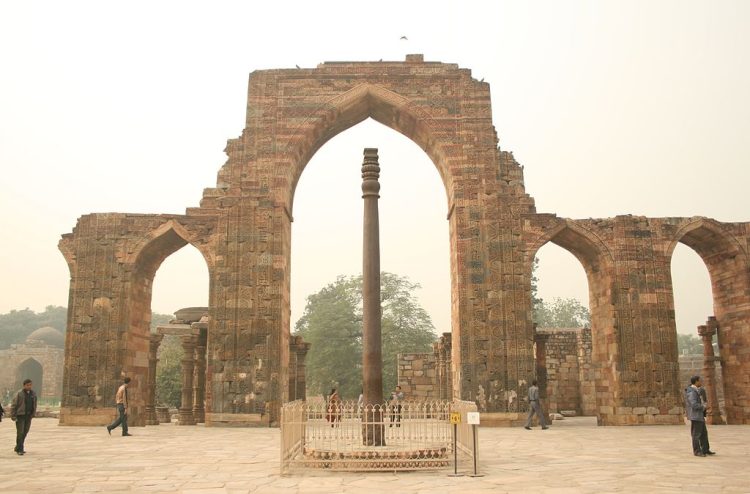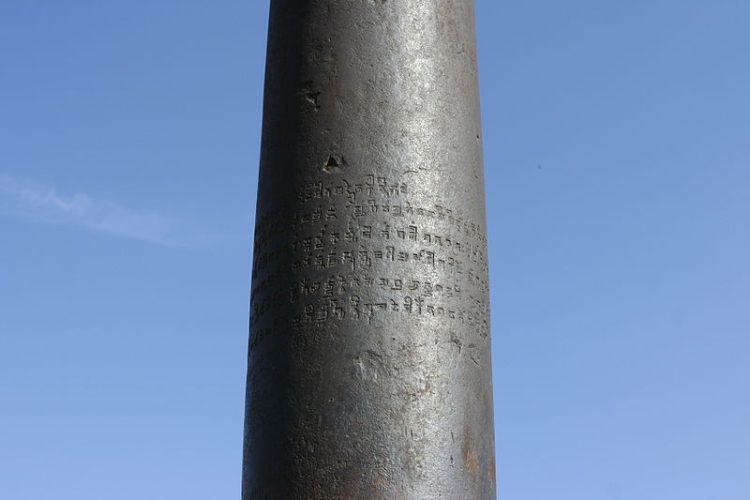The Quwwat-ul-Islam Mosque complex in New Delhi is home to an ancient wonder of metal work – a 1,600-year-old iron pillar that is exceptionally resistant to rust.
The Iron Pillar of Qutub Minar, as this ancient monument is sometimes referred to, measures 7.21-meters-tall, has a diameter of 41 centimeters and weighs about 6 tons. It’s also more than a millennium and a half old, believed to have been erected during the reign of Chandragupta II, one of the most powerful emperors of the Gupta Empire. And even though it has spent all that time outdoors, the Pillar of Qutub Minar shows almost no sign of rust damage. For decades, scientists and metal workers from all over the world speculated about the properties of this unusual marvel, and it wasn’t until 2003 that the mystery was finally cracked.

Photo: Diego Delso/Wikimedia Commons
There was a time when many believed that the rust-resistant pillar was made out of some mysterious, non-earthly metal, while others speculated that whoever made it used a futuristic technique that was lost in the mists of time. That second theory is technically true, as metallurgists at Kanpur IIT demonstrated in a paper published in the journal Current Science.
R Balasubramanian, co-author of the study, called the pillar “a living testimony to the skill of metallurgists of ancient India,” explaining that the wrought iron structure features a protective layer called “misawite”, an amorphous iron oxyhydroxide that forms a barrier by adhering next to the interface between metal and rust. The formation of misawite is caused by the high phosphorus content in the iron.

Photo: Fablesindia/Wikimedia Commons
While modern iron has a phosphorus content of under 0.05%, the wrought iron that the Pillar of Qutub Minar is made of contains as much as 1 percent phosphorus. According to Dr. Balasubramaniam from the Indian Institute of Technology, instead of removing the phosphorus from the iron as workers do today to prevent the metal from breaking up, they kept it in, and simply pummelled the pillar with hammers to push the phosphorus from the core towards the surface. This kept the iron strong, and also led to the formation of the misawite barrier.
As is often the case with these ancient wonders, they are very vulnerable to humans. Having gained a reputation for bringing good luck to whoever managed to wrap their arms around the metal structure and touch the tip of their fingers, more and more people engaged in the practice over the years, which led to a visible discoloration of the pillar near its base.
The thing with misawite is that it is very good at protecting iron against rust, but it’s an extremely thin layer, and by constantly rubbing their clothes against it, people were unknowingly removing the very thing that had kept the Iron Pillar of Qutub Minar in pristine condition for 1,600 years. Luckily, authorities realized the danger and erected a protective fence around the pillar.













